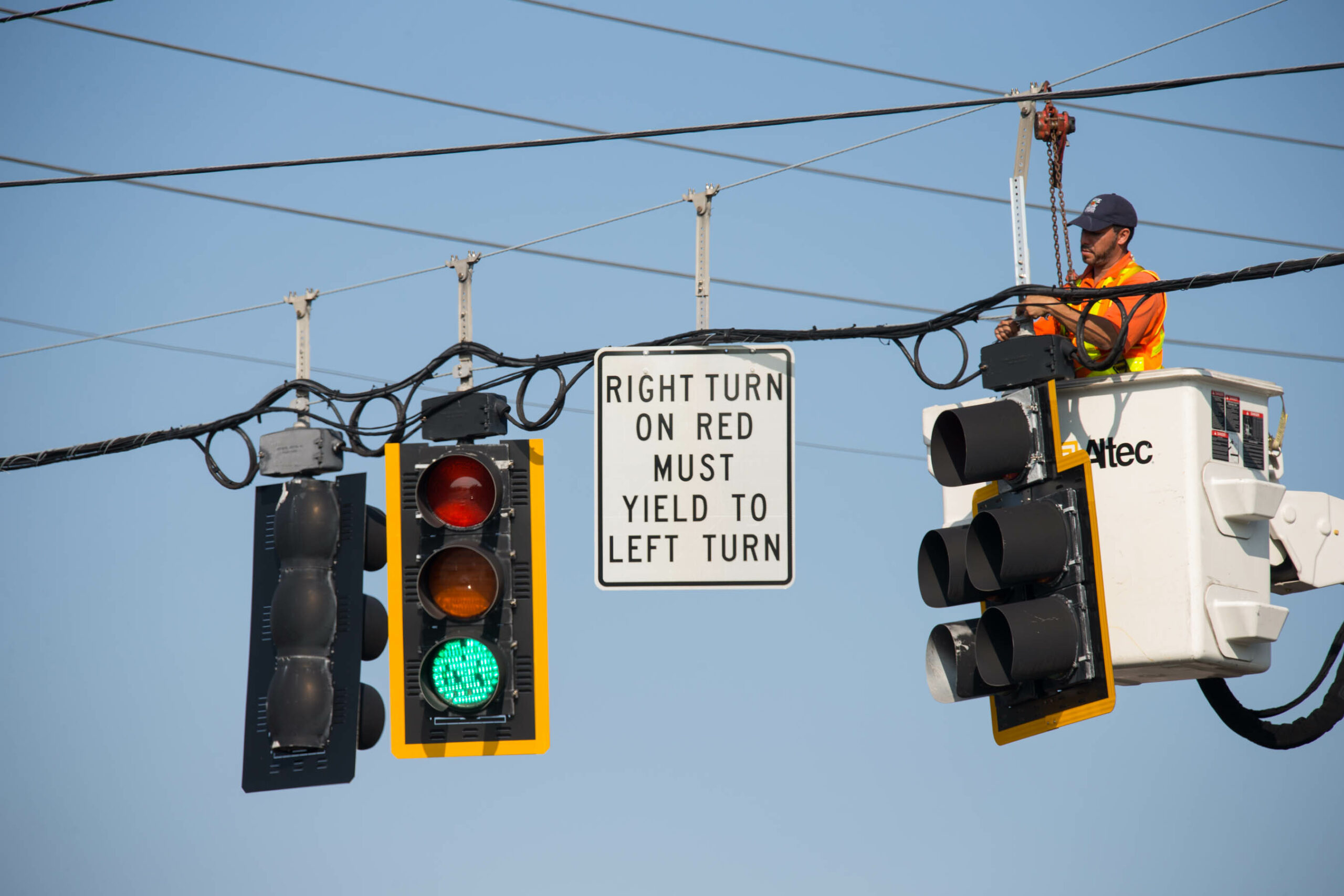
Orange County Public Works Pitches in after Tragic Crash
It was a horrific accident in March of 2021, as FHP troopers determined a speeding SUV struck the side of a car, killing two mothers and three children in West Orange County. It happened at the intersection of Clarcona-Ocoee Rd. and Gaymar Dr. The crash shocked the community and as soon as Orange County Public Works Department was notified about the fatal collision, it conducted a site analysis and determined that in order to proactively improve safety for motorists, a traffic signal was needed at the intersection.
“We learned there were issues with drivers trying to make left-hand turns from Clarcona-Ocoee Rd onto Gaymar Drive,” explained Humberto Castillero, Traffic Engineering Manager, Public Works Department.
It can take up to three years for a traffic signal to get approved and functioning, but Public Works saved time by using its internal resources to design and install the traffic signal, saving almost 12 months in the design and construction process. It has also installed pavement markings showing the speed limit (45 mph) and speed feedback signs approaching the intersection.
To date, concrete strain poles and foundations, underground wire, conduits, span wire connections, signal and pedestrian indications, ADA ramps and crosswalks have all been completed and installed. The traffic signal (that includes a left-turn signal) should be fully installed and operational by the end of April 2022.
Public works has also initiated an access/speed management study along Clarcona-Ocoee Rd, between Ocoee-Apopka Rd and US 441 to determine if additional safety and speed reduction measures could be implemented along this corridor.
“When it comes to safety, we want to be proactive, not reactive,” asserted Castillero. “You may have all the conditions for a good road design, but humans aren’t perfect, so you need flexibility in the design to make it more forgiving.”
To that end, Castillero and his team followed the Vision Zero strategy, an effective method of eliminating all traffic fatalities and severe injuries, while increasing safe, healthy and equitable mobility for all. First implemented in Sweden in the 1990s, Vision Zero has proved successful across Europe and is now gaining momentum in the United States.
Some of the tools and techniques being used to make our roads safer are from the internationally acclaimed Vision Zero plan that aims to reduce traffic deaths and pedestrian injuries in communities to zero. That includes: speed management (speed safety cameras, appropriate speed limits); roadway departure (wider edge lines, median barriers); intersections (corridor access management, roundabouts, reduced left-turn conflict intersections); pedestrian/bicycles (crosswalk visibility enhancements, bicycle lanes); and crosscutting (pavement friction management, lighting, local road safety plans).
“Zero fatalities are our goal,” said Castillero, “and we’re using proven techniques to get there.”
Because safety is everyone’s business, engineering, enforcement, education and emergency management are all critical components, and those associated with each component must be engaged in the same conversations.
Castillero calls this the “Four E’s” approach to engagement.
“We want to enhance the lives of everyone in the community,” said Castillero. “We’re growing daily and have traffic growing pains, but we need to work together and communicate with one goal in mind – safety.”
Please share any traffic or pedestrian safety concerns you may have by using the OCFL 311 mobile app or calling 407-836-3111.
